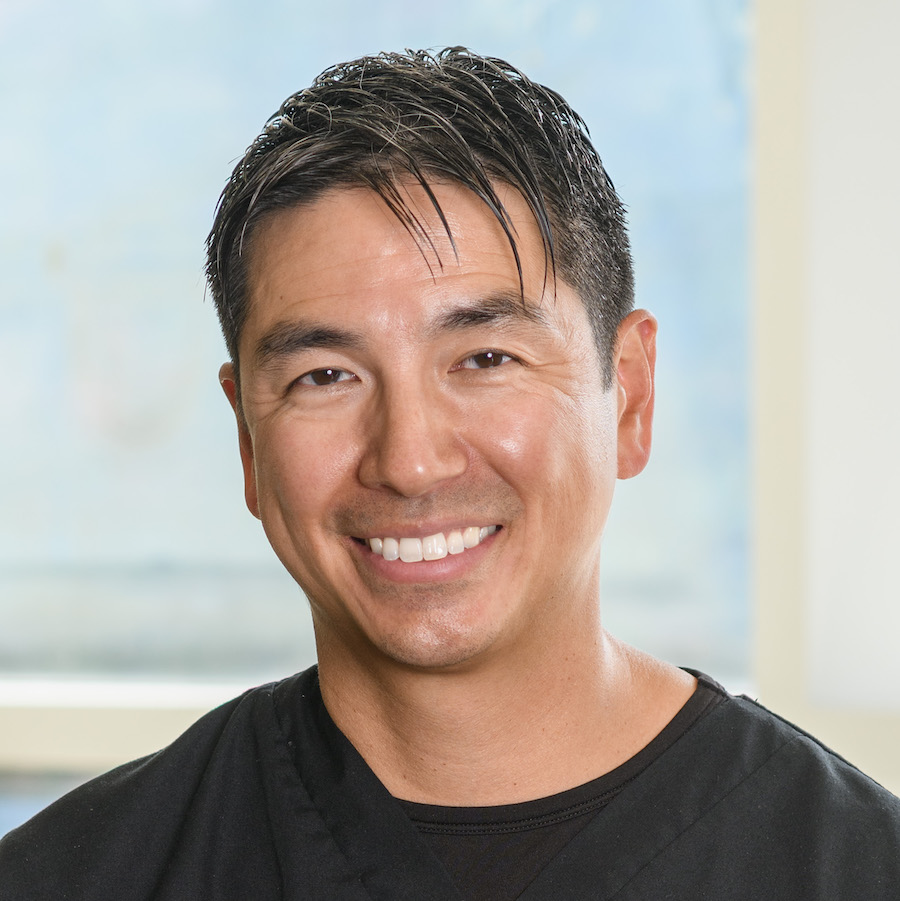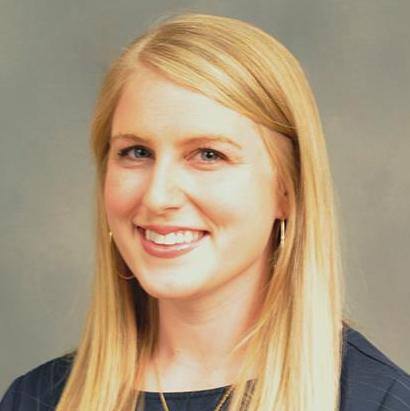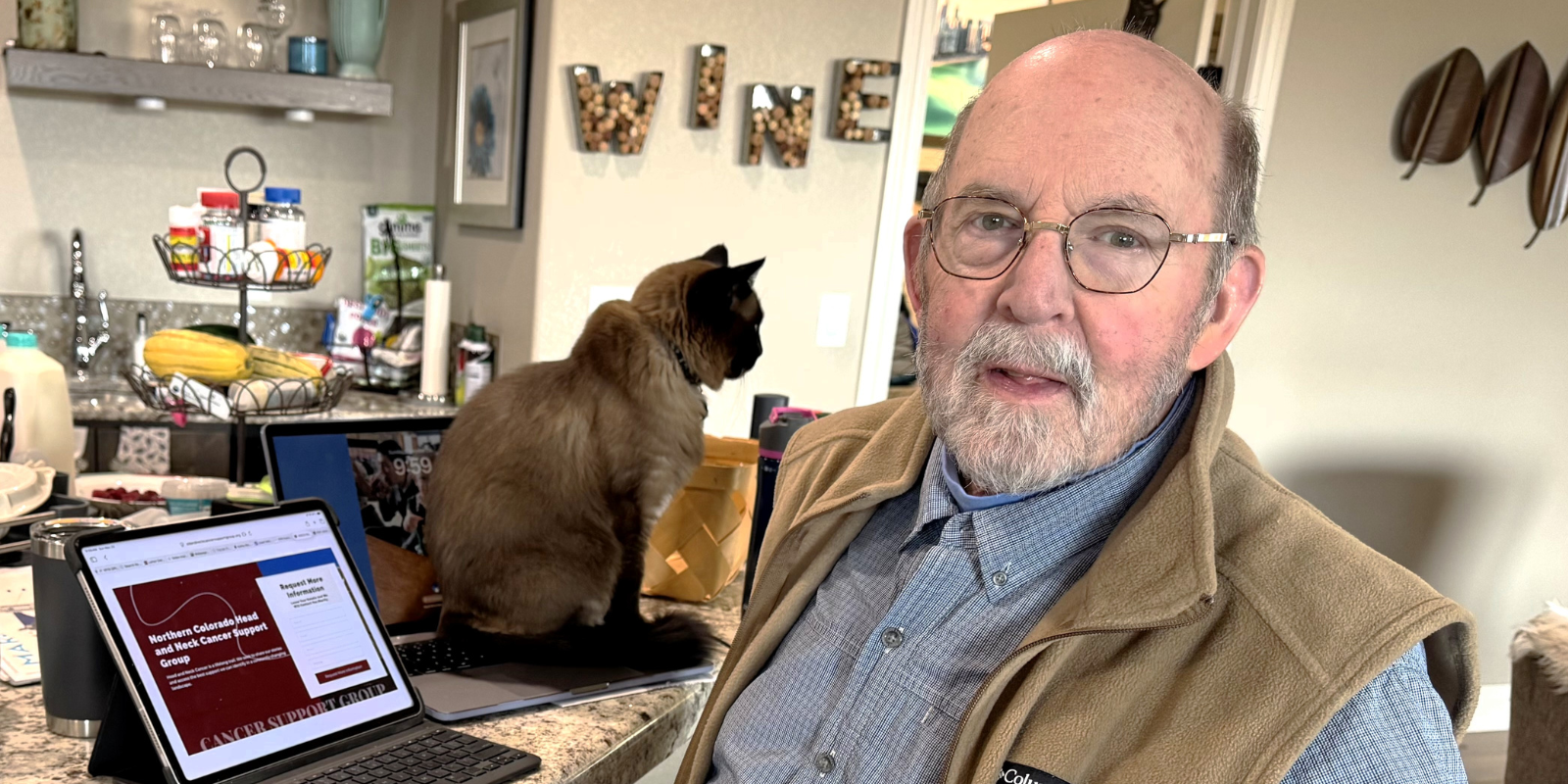Glen Miller calls it his “hockey puck,” and he knows it helped to save his life after he was diagnosed with colorectal cancer that spread to his liver.
Officially known as a hepatic arterial infusion pump (HAI), the device is surgically implanted under the skin to deliver a high dose of chemotherapy into the liver’s blood supply.
“The goal of the pump therapy is twofold,” says Reed Weiss, DNP, APRN, one of Miller’s providers at the University of Colorado Cancer Center. “One of the goals is trying to shrink the tumors down and keep the disease under control, especially when it's widespread. We know there's a lot of micro-metastatic disease that we can't see on the scans.”
“The other goal of the treatment is conversion to being a surgical candidate,” Weiss continues. “If the patient doesn't appear to be resectable up front, we can treat them with the pump and eventually get them to surgery so we can get rid of all the disease in the liver.”
In Miller’s case, the pump was placed to keep the disease under control, implanted after multiple rounds of systemic chemotherapy and three separate surgeries to remove the cancer in his liver. He received the HAI therapy along with additional systemic chemotherapy, but he says he felt fewer side effects since some of the medication was being delivered directly to his liver.
“I don't recall ever feeling sick with the puck,” he says. “I didn't lose any weight, like I did the first time I had chemo.”
More research underway
Available primarily at specialized cancer centers like the CU Cancer Center, the HAI pump has been a lifesaver for some, but not all patients with colorectal cancer that spreads to the liver — and researchers are still working to understand who will benefit most from the treatment.
“We've seen some incredible results with the pump, but it's hard to predict who's going to respond to the pump and who isn’t,” Weiss says. “It really comes down to the biology of the disease, and we just don't know enough. We're conducting research to figure out if there are specific things related to the disease biology that could help us predict responsiveness. We're part of an international consortium trial with different centers across the country and the world, and we're combining all our data on pumps to see the impact of treating with the pump and chemo versus just chemo alone.”
Seven-year journey
Miller’s cancer journey began seven years ago, when he began feeling pain in his abdomen. He suspected issues with his gallbladder, but when he went to get checked out, doctors diagnosed him with colorectal cancer that had spread to the liver. Miller, who lived in Victoria, Canada, at the time, was told he had around a year to live.
“They said, ‘You have stage 4 cancer; we'll put you on palliative chemo and give you about a year to live — maybe a year and a half if you're really tough,’” Miller says. “I wanted a second opinion, so I went to Denver because my niece’s husband had cancer, and he was getting treated at Anschutz.”
Miller met with CU Cancer Center members Ana Gleisner, MD, PhD, and Chris Lieu, MD — associate director of clinical research at the CU Cancer Center — who had a different outlook of his prognosis than the doctors in Canada.
“They said, ‘We can operate on you, but you need to go on major chemotherapy before we do, because we want to knock this cancer back,’” Miller remembers. He eventually moved back to his hometown of Sanford, in Colorado’s San Luis Valley, to be closer to the treatment. Three months of chemotherapy was followed by surgery, then more chemotherapy and more surgeries as the cancer continued to recur. After the HAI pump treatment, however, Miller has shown no evidence of disease for nearly three years.
“If I didn’t get a second opinion, I most likely would not be here today,” Miller says. “As far as I'm concerned, the CU doctors have given me the six years that I've got, and they might have given me the rest of my life back, whatever that was ever going to be. Dr. Lieu and Dr. Gleisner — they’re my heroes.”
Multidisciplinary care and a positive attitude
Lieu credits Miller’s turnaround not only to the HAI pump, but to the CU Cancer Center’s multidisciplinary liver clinic, where patients are seen by multiple specialists on the same day to determine the best course of action.
“All the providers are talking to each other — not just once, but longitudinally over time,” Lieu says. “It’s an ongoing conversation.”
And of course, Lieu credits a good deal of his recovery to Miller himself.
“Glen really advocated for himself to find providers that he connected with,” Lieu says. “He asked hard questions, which we want our patients to do. And he has an incredible attitude — positive and willing to face challenges, even when we've had to deliver some unfortunate news. He was very brave and had a lot of courage. Glen is really an inspirational person, with his attitude and with his ability to face difficult situations with a lot of resilience.”





